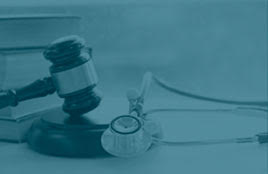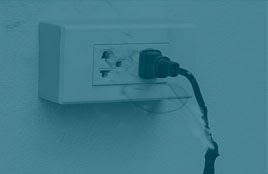Misidentifying a patient is a long-standing problem that has affected all aspects of healthcare and led to life threatening errors. The Joint Commission on Accreditation of Hospitals Organization (JCAHO), has been tracking errors since 1996. JCAHO reviewed 152 significant errors, called “sentinel events”, related to wrong-patient, wrong-site, and wrong-procedure events in 2011 alone.
Reports submitted to the Institute for Safe Medication Practices (ISMP) have shown that wrong-patient errors can originate from any phase in the medication-use process. A large set of medication error events is reported every year by Pennsylvania healthcare facilities to the Pennsylvania Patient Safety Authority. In June, 2013, an analysis of the circumstances surrounding these errors was done, with recommendations to help prevent future medication errors.
Medication errors generally occurred in the following areas:
1) “Wrong patient” errors during administration.
There were 353 wrong-patient errors that occurred during the administration phase of medication administration, which includes the tasks usually performed by nurses. For example, multiple reports described a nurse selecting the wrong patient when retrieving medications.
Many factors, and often more than one factor per event, contributed to patients receiving other patients’ medications during actual medication administration. Most commonly, two patients were prescribed the same medication, and one received the medication dose intended for the other. The second most prevalent contributing factor was inadequate identification (ID) of the patient. This means there has been a failure to use two different ways to identify a patient before giving a medication.
2) “Wrong-patient” errors during transcribing
The second most prevalent way medication errors originated was transcribing. Transcribing is when the medication order written by the doctor is copied to the patient’s medication administration record. Of the transcribing events, most errors were due to transferring orders into the wrong chart. Once again, many factors contribute to transcribing errors. The majority of these errors come from orders given verbally (not written by the doctor), similar patient names, or the same or similar room numbers.
3. “Wrong-patient” errors during prescribing
The predominant type of prescribing error involved a prescriber ordering a medication on the wrong chart.
4. “Wrong-patient” errors during dispensing
The least number of wrong-patient errors occurred during the dispensing stage of the medication use process that primarily takes place within the pharmacy.
****
The reports of wrong patient medication errors reveal the complex nature of wrong-patient medication errors. These types of errors were identified in all phases of the medication-use process. So, what should hospitals be doing to decrease the risk of wrong patient medication errors?
Improve patient identification by healthcare providers.
Two patient identifiers should be used at all times. A proper identification check not only consists of asking the patient who they are, but also requires confirmation with the medication administration record or patient chart, patient armband, patient-specific medication labels, and/or other records. Overreliance on assuming you know who the patient is, based upon what bed they are in, easily results in medications being given to a roommate, or to the wrong patient who has switched rooms or left the room for a procedure. In fact, JCHAO requires healthcare practitioners to use at least two patient identifiers (not the patient’s room number or location) when providing care, treatment, and medication.
Be stringent in use of technology.
Hospitals have begun to use technology to solve some of the problems associated with transcription errors. Having the doctor enter the order directly into the computer and placing a bar code on the medication has helped reduce error. However, errors can still occur just by clicking on the wrong patient name, or scanning the bar code improperly. In these instances of error, nurses administered the medication first then scanned the patient’s armband second, too little too late. Technology has its limitations and is only as accurate as its user is careful.
Empower the patient to prevent and detect medication errors.
Patient and family members can be an added safeguard against harm from an error. In several of the reports, patients or family members caught the wrong-patient error when they actively examined the medications being administered and questioned the reasons for the medications. They noticed IV bags with labels that even had another patient’s name. Patients and their families need to be active participants in identification to express concerns about safety and potential errors, and to ask questions about the correctness of their care.






